Traduzione generata automaticamente
Mostra originale
Mostra traduzione
Limoges porcelain in ''Bleu de Sèvres'' and gold. Artist: Salvador Dali Exclusive limited edition to 2000 copies ''Raynaud & Co. Limoges'', France, 1968. ''Silhouette de Faust'' drawn by Salvador Dalí. Print signed. Plate Signed in the back of the plate Dimensions: Diameter: 26 cm Edited by Salins Earthenware Sold in its original box The company ''Raynaud-Limoges'' specialized in the production of porcelain products in small runs, among the company's customers - crowned people and representatives of the old aristocratic families of Europe. Dali - the Prodigy Child without an Exam. Salvador Dali was born as the son of a prestigious notary in the small town of Figueras in Northern Spain. His talent as an artist showed at an early age and Salvador Felipe Jacinto Dali received his first drawing lessons when he was ten years old. His art teachers were a then well known Spanish impressionist painter, Ramon Pichot and later an art professor at the Municipal Drawing School. In 1923 his father bought his son his first printing press. Dali began to study art at the Royal Academy of Art in Madrid. He was expelled twice and never took the final examinations. His opinion was that he was more qualified than those who should have examined him. In 1928 Dali went to Paris where he met the Spanish painters Pablo Picasso and Joan Miro. He established himself as the principal figure of a group of surrealist artists grouped around Andre Breton, who was something like the theoretical ''schoolmaster'' of surrealism. Years later Breton turned away from Dali accusing him of support of fascism, excessive self-presentation and financial greediness. By 1929 Dali had found his personal style that should make him famous the world of the unconscious that is recalled during our dreams. The surrealist theory is based on the theories of the psychologist Dr. Sigmund Freud. Recurring images of burning giraffes and melting watches became the artist's surrealist trademarks. His great craftsmanship allowed him to execute his paintings in a nearly photo-realistic style. No wonder that the artist was a great admirer of the Italian Renaissance painter Raphael. Salvador Dali and Gala. Meeting Gala was the most important event in the artist's life and decisive for his future career. She was a Russian immigrant and ten years older than Dali. When he met her, she was married to Paul Eluard. Gala decided to stay with Dali. She became his companion, his muse, his sexual partner, his model in numerous art works and his business manager. For him she was everything. Most of all Gala was a stabilizing factor in his life. And she managed his success in the 1930s with exhibitions in Europe and the United States. Gala was legally divorced from her husband in 1932. In 1934 Dali and Gala were married in a civil ceremony in Paris and in 1958 in church after Gala's former husband had died in 1952. However from around 1965 on, the couple was seen less frequently together. But Gala continued to manage Dali's business affairs. 1933 Salvador Dali had his first one-man show in New York. One year later he visited the U.S. for the first time supported by a loan of US$500 from Pablo Picasso. To evade World War II, Dali chose the U.S.A. as his permanent residence in 1940. He had a series of spectacular exhibitions, among others a great retrospective at the Museum of Modern Art in New York. Besides creating a number of great paintings, Dali caused the attention of the media by playing the role of a surrealist clown. He made a lot of money and was contemptuously nicknamed Avida Dollars (greedy for dollars) by Andre Breton. Dali became the darling of the American High Society. Celebrities like Jack Warner or Helena Rubinstein gave him commissions for portraits. His art works became a popular trademark and besides painting he pursued other activities - jewelry and clothing designs for Coco Chanel or film making with Alfred Hitchcock. The Classic Period After World War II In 1948 Dali and Gala returned to Europe, spending most of their time either in their residence in Lligat or Spain or in Paris or France or in New York. Dali developed a lively interest in science, religion and history. He integrated things into his art that he had picked up from popular science magazines. Another source of inspiration were the great classical masters of painting like Raphael, Velasquez or the French painter Ingres. The artist commented his shift in style with the words: ''To be a surrealist forever is like spending your life painting nothing but eyes and noses.'' In 1958 the artist began his series of large sized history paintings. He painted one monumental painting every year during the summer months in Lligat. The most famous one, The Discovery of America by Christopher Columbus, can be seen at the Dali Museum in St. Petersburg in Florida. It is breath-taking. The artist's late art works combine more than ever his perfect and meticulous painting technique with his fantastic and limitless imaginations. Salvador Dali is the only known artist who had two museums dedicated exclusively to his works at lifetime. Dali Museum in St. Petersburg, Florida The Dali Museum in St. Petersburg in Florida or U.S.A. was founded in 1971 by the Dali collector A. Reynolds Morse and his wife Eleanor. The collection was first exhibited in a building adjacent to their home in Cleveland/Ohio. In 1982, the museum was moved to St. Petersburg in Florida. It hosts 95 oil paintings including six of Dali's eighteen large-sized historical paintings. Dali Museum-Theater in Figueres, Spain. The Dali Museum-Theater in Figueres, Spain was the former Municipal Theater of Figueres. In 1918, when Salvador Dali was only fourteen years old, it had shown his first public exhibition. Since 1970 the artist had dedicated his energy to transform the former Municipal Theater into a museum and art gallery. In 1974 the Theatro Museo Dali was officially opened. 1980 Dali was forced to retire due to palsy, a motor disorder, that caused a permanent trembling and weakness of his hands. He was not able to hold a brush any more. The fact that he could not follow his vocation and passion of painting and the news of Gala's death in 1982 left him with deep depressions. After Gala's death he moved to Pubol, a castle, he had bought and decorated for Gala. In 1984, when he was lying in bed, a fire broke out and he suffered sever burns. Two years later, a pacemaker had to be implanted. Towards the end of his life, Dali lived in the tower of his own museum where he died on January 23, 1989 from heart failure.
Porcellana di Limoges in ''Bleu de Sèvres'' e oro. Artista: Salvador Dalì Edizione esclusiva limitata a 2000 esemplari ''Raynaud & Co. Limoges'', Francia, 1968. ''Silhouette de Faust'' disegnata da Salvador Dalí. Stampa firmata. Lastra firmata sul retro della lastra Dimensioni: Diametro: 26 cm Edito da Salins Earthenware Venduto nella sua scatola originale L'azienda ''Raynaud-Limoges'' era specializzata nella produzione di prodotti in porcellana in piccole tirature, tra i clienti dell'azienda - personaggi coronati e rappresentanti delle antiche famiglie aristocratiche d'Europa. Dalì - il bambino prodigio senza esame. Salvador Dalì nacque come figlio di un prestigioso notaio nella piccola città di Figueras, nel nord della Spagna. Il suo talento artistico si manifestò fin dalla più tenera età e Salvador Felipe Jacinto Dalì ricevette le prime lezioni di disegno all'età di dieci anni. I suoi insegnanti d'arte furono un pittore impressionista spagnolo allora molto noto, Ramon Pichot, e in seguito un professore d'arte della Scuola Comunale di Disegno. Nel 1923 il padre acquistò al figlio la prima macchina da stampa. Dalì iniziò a studiare arte all'Accademia Reale d'Arte di Madrid. Fu espulso due volte e non sostenne mai gli esami finali. La sua opinione era che fosse più qualificato di coloro che avrebbero dovuto esaminarlo. Nel 1928 Dalì si recò a Parigi dove conobbe i pittori spagnoli Pablo Picasso e Joan Miro. Si affermò come la figura principale di un gruppo di artisti surrealisti raggruppati intorno ad Andre Breton, che era una sorta di "maestro teorico" del surrealismo. Anni dopo Breton si allontanò da Dalì accusandolo di sostenere il fascismo, di eccessiva autopresentazione e di avidità finanziaria. Nel 1929 Dalì aveva trovato il suo stile personale che lo avrebbe reso famoso: il mondo dell'inconscio che viene richiamato durante i sogni. La teoria surrealista si basa sulle teorie dello psicologo Sigmund Freud. Le immagini ricorrenti di giraffe in fiamme e orologi che si sciolgono divennero il marchio di fabbrica surrealista dell'artista. La sua grande maestria gli permise di eseguire i suoi dipinti in uno stile quasi fotorealistico. Non sorprende che l'artista fosse un grande ammiratore del pittore rinascimentale italiano Raffaello. Salvador Dalì e Gala. L'incontro con Gala fu l'evento più importante nella vita dell'artista e decisivo per la sua futura carriera. Era un'immigrata russa e aveva dieci anni in più di Dalì. Quando la conobbe, era sposata con Paul Eluard. Gala decise di restare con Dalì. Divenne la sua compagna, la sua musa, la sua partner sessuale, la sua modella in numerose opere d'arte e la sua manager d'affari. Per lui era tutto. Soprattutto Gala fu un fattore stabilizzante nella sua vita. E fu lei a gestire il suo successo negli anni Trenta con mostre in Europa e negli Stati Uniti. Gala divorziò legalmente dal marito nel 1932. Nel 1934 Dalì e Gala si sposarono con una cerimonia civile a Parigi e nel 1958 in chiesa, dopo che il precedente marito di Gala era morto nel 1952. Tuttavia, a partire dal 1965 circa, la coppia fu vista meno spesso insieme. Gala continuò a gestire gli affari di Dalì. 1933 Salvador Dalì tiene la sua prima mostra personale a New York. Un anno dopo visita per la prima volta gli Stati Uniti con il sostegno di un prestito di 500 dollari di Pablo Picasso. Per evitare la Seconda Guerra Mondiale, nel 1940 Dalì scelse gli Stati Uniti come residenza permanente. Fece una serie di mostre spettacolari, tra cui una grande retrospettiva al Museum of Modern Art di New York. Oltre a creare una serie di grandi dipinti, Dalì attirò l'attenzione dei media interpretando il ruolo di un clown surrealista. Guadagnò molti soldi e fu soprannominato sprezzantemente Avida Dollars (avido di dollari) da Andre Breton. Dalì divenne il beniamino dell'alta società americana. Celebrità come Jack Warner o Helena Rubinstein gli commissionarono ritratti. Le sue opere d'arte divennero un marchio popolare e, oltre a dipingere, si dedicò ad altre attività, come la creazione di gioielli e abiti per Coco Chanel o la realizzazione di film con Alfred Hitchcock. Il periodo classico dopo la seconda guerra mondiale Nel 1948 Dalì e Gala tornarono in Europa, trascorrendo la maggior parte del tempo nella loro residenza di Lligat o in Spagna, oppure a Parigi o in Francia o a New York. Dalì sviluppò un vivo interesse per la scienza, la religione e la storia. Integrava nella sua arte elementi che aveva raccolto da riviste scientifiche popolari. Un'altra fonte di ispirazione erano i grandi maestri della pittura classica come Raffaello, Velasquez o il pittore francese Ingres. L'artista commentò il suo cambiamento di stile con le parole: ''Essere un surrealista per sempre è come passare la vita a dipingere solo occhi e nasi'' Nel 1958 l'artista inizia la sua serie di dipinti storici di grandi dimensioni. Ogni anno, durante i mesi estivi, dipinge un quadro monumentale a Lligat. Il più famoso, La scoperta dell'America da parte di Cristoforo Colombo, si può ammirare al Museo Dalì di San Pietroburgo, in Florida. È un'opera che lascia senza fiato. Le ultime opere dell'artista combinano più che mai la sua tecnica pittorica perfetta e meticolosa con la sua immaginazione fantastica e senza limiti. Salvador Dalì è l'unico artista conosciuto ad avere due musei dedicati esclusivamente alle sue opere. Museo Dalì di St. Petersburg, Florida Il Museo Dalì di St. Petersburg, in Florida, negli Stati Uniti, è stato fondato nel 1971 dal collezionista Dalì A. Reynolds Morse e da sua moglie Eleanor. La collezione fu inizialmente esposta in un edificio adiacente alla loro casa di Cleveland/Ohio. Nel 1982 il museo è stato trasferito a St. Petersburg, in Florida. Ospita 95 dipinti a olio, tra cui sei dei diciotto dipinti storici di grandi dimensioni di Dalì. Museo-Teatro Dalì a Figueres, Spagna. Il Museo-Teatro Dalì di Figueres, in Spagna, era l'ex Teatro Municipale di Figueres. Nel 1918, quando Salvador Dalì aveva solo quattordici anni, vi aveva esposto la sua prima mostra pubblica. Dal 1970 l'artista ha dedicato le sue energie a trasformare l'ex Teatro Municipale in un museo e in una galleria d'arte. Nel 1974 fu inaugurato ufficialmente il Theatro Museo Dali. nel 1980 Dalì fu costretto a ritirarsi a causa di una paralisi, un disturbo motorio che gli provocava un tremolio e una debolezza permanenti delle mani. Non era più in grado di tenere in mano un pennello. L'impossibilità di seguire la sua vocazione e la sua passione per la pittura e la notizia della morte di Gala nel 1982 gli causarono una profonda depressione. Dopo la morte di Gala si trasferì a Pubol, un castello che aveva acquistato e decorato per Gala. Nel 1984, mentre era a letto, scoppiò un incendio e riportò gravi ustioni. Due anni dopo dovette farsi impiantare un pacemaker. Verso la fine della sua vita, Dalì visse nella torre del suo museo, dove morì il 23 gennaio 1989 per insufficienza cardiaca.
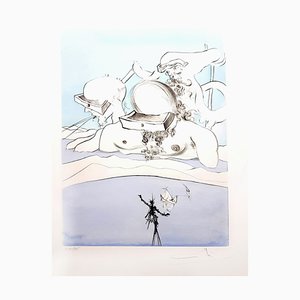
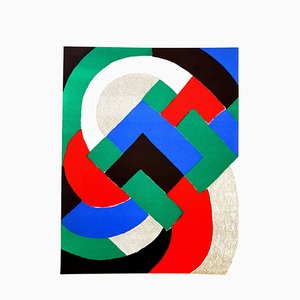
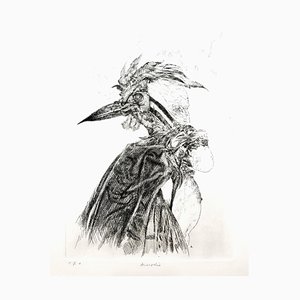
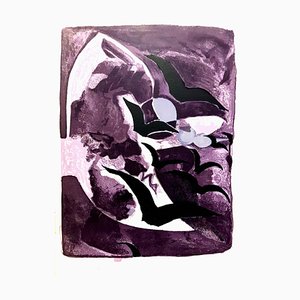
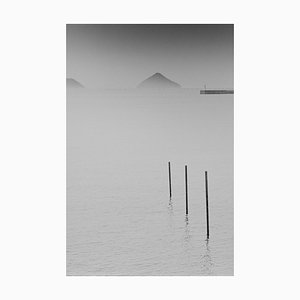
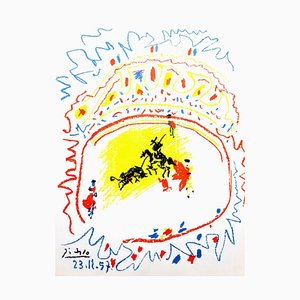
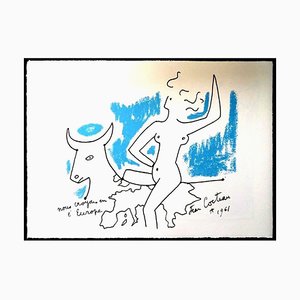
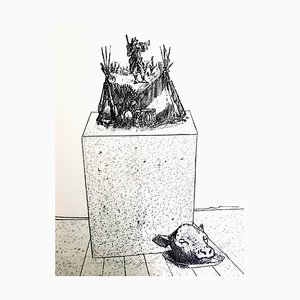
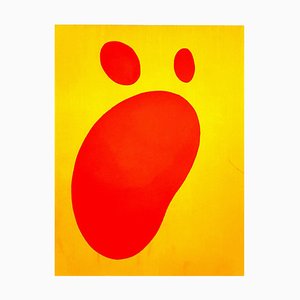


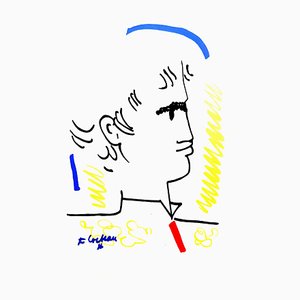
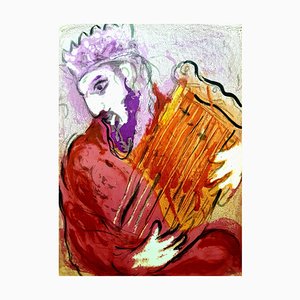
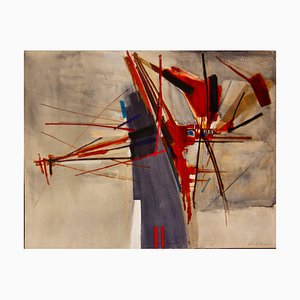
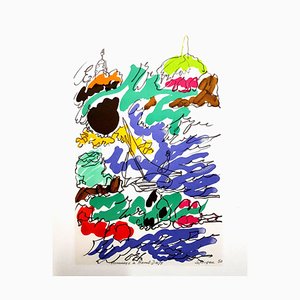
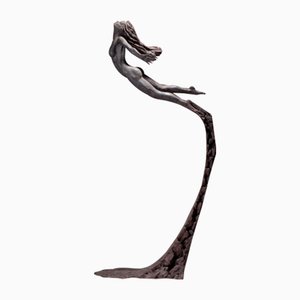


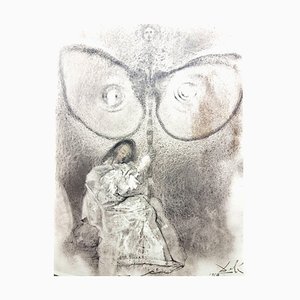
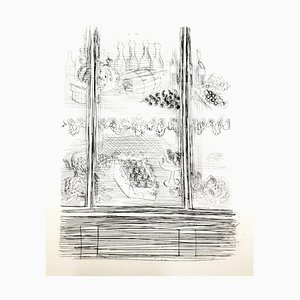
Contattaci
Fai un'offerta
Abbiamo notato che sei nuovo su Pamono!
Accetta i Termini e condizioni e l'Informativa sulla privacy
Contattaci
Fai un'offerta
Ci siamo quasi!
Per seguire la conversazione sulla piattaforma, si prega di completare la registrazione. Per procedere con la tua offerta sulla piattaforma, ti preghiamo di completare la registrazione.Successo
Grazie per la vostra richiesta, qualcuno del nostro team vi contatterà a breve.
Se sei un professionista del design, fai domanda qui per i vantaggi del Programma Commerciale di Pamono